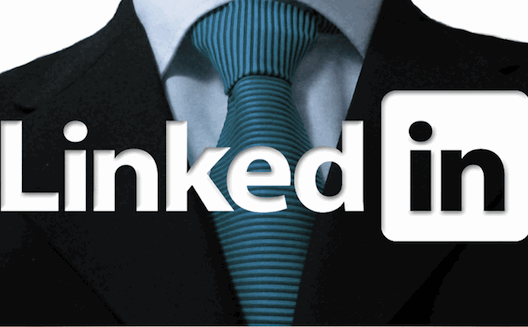10 of Reid Hoffman's most valuable tips from LinkedIn's Series B pitch deck


As part of Greylock Partners’s mandate to “always help
entrepreneurs,” Reid Hoffman has published
LinkedIn’s slide deck from its Series B pitch to Greylock in
2004, which led to the company securing $10 million.
Today, LinkedIn is
one of the steadiest of the Silicon Valley giants, valued at around
$24 billion, with stock trading at over 5 times its 2011 IPO price
of $45.
As Hoffman reveals the company’s tactics and mistakes, his advice
is especially valuable for startups in the Arab world. In 2004’s
Silicon Valley, which was still reeling from the dot-com bust just
four years earlier, investors were especially risk-averse and wary
of companies without solid upfront revenue streams. Sound
familiar?
Focusing on building up a huge userbase without an immediate path
to revenue is a tactic that might fly today in Silicon Valley for
the right idea, but will rarely seduce substantial capital from
investors in the Arab world right now. In a fragmented, early
market with a huge gap in Series A and B funding, startups betting
on multiple rounds of funding before monetizing will have a tough
time convincing investors to come on board.
So understanding what made LinkedIn a compelling bet in 2004, while
valuable to any startup, is especially valuable here. Below are 10
key pieces of advice that Hoffman gives:
- Focus on revenue.
As mentioned, this is critical for startups in this region. In its Series B deck, LinkedIn sets forth three revenue streams (targeted ads, job listings, and subscription fees) that gave rise to its three current stream: Marketing Solutions (targeted advertising, which now involves native ads embedded in its content stream), Talent Solutions (LinkedIn’s most lucrative service, by which corporations and recruiters pay for premium access to candidates), and Premium Subscriptions.
While its triple revenue stream is today seen as one of the company’s strengths, Hoffman cautions against presenting three streams at the outset, pointing out that, as a rule, one revenue stream will drive the business.
- Compare your company to a known success.
As Hoffman points out, saying that LinkedIn is “Friendster for business” was not a compelling pitch, as investors wanted to see clear revenue streams, which Friendster famously lacked at the time. (And for those that prefer to think of LinkedIn as “Facebook for Grownups,” in 2004, Facebook, which had only launched in a few universities, was hardly the relevant comparator).
Instead, Hoffman related LinkedIn to Google, by describing it as “professional people search 2.0,” since investors knew that Google was valuable.
- Lead with a very simple investment thesis.
In this early deck, LinkedIn pitched with the sentence, “Find and contact the people you need through the people you already trust.”
- Address investors’ concerns upfront.
While in Silicon Valley in 2013, pitching might be about, as Hoffman says, “whether you can break through the noise,” successfully pitching in 2004- or the Arab world- requires attention to concerns, and especially risk factors, which Hoffman later says he would have included more of in his initial pitch. This can also include offering a plan B should the initial plan for the company’s direction not work out as intended, he later explains.
- Pitch by analogy.
By showcasing a broader trend towards networks as a preferred way of finding information, and showcasing several other trends that echo LinkedIn’s proposal, LinkedIn’s deck illustrates its value clearly. Not every analogy is perfect, Hoffman points out, but by situating the company in context and relative to other sectors, he makes the case clear.
- Distinguish yourself.
LinkedIn makes its relationship to competitors clear with a nice, simple, quadrant graph. It also bets on a differentiation strategy- the effect of its network, as opposed to its active users or amount of data- that turned out to work.
- Emphasize your financing strategy.
“People frequently think the most fundamental strategy of a startup is its product strategy. In fact, the most fundamental strategy is the financing strategy,” Hoffman says. This involves laying out both planned revenue streams and plans for future funding, which entrepreneurs should always be thinking about, he cautions, especially since raising capital typically takes at least a year.
- Show the right metrics.
Rather than focusing on total addressable market (TAM), show that you’re focused on the metrics that matter: revenue numbers, engagement traction, activity, etc., says Hoffman. Most investors won’t be won over by claims that a young startup is capturing a huge TAM.
- Be wary of confirmation bias.
Of course it’s nice when investors tell you that the idea is great, but- especially in the Middle East- investors can be overly polite or simply not explain the entirety of why they said no. Push to get feedback and ask the negative questions that not every investor will answer upfront. “The questions you should always ask are: What’s wrong? What’s broken? Why won’t it work? What do you think the risks are?” Hoffman urges.
- Be wary of adjectives and adverbs.
Here, Hoffman makes a point that anyone pitching to investors or media should keep in mind. “Anytime you use qualifiers like “very”, you’re overstating your point, which shows that you’re nervous about it,” he says. “When I’m being pitched as an investor and I see such qualifiers, I make sure to ask questions about those areas because I know the entrepreneur is most nervous about them.” He confesses that he wrote “very high operating margins” in this early deck because he was nervous about LinkedIn’s path to revenue. Don't make the same mistake. Undersell and overdeliver.
For more, check out Business Insider’s version of the pitch deck or head to Reid Hoffman’s blog to see the full deck and read his extensive notes.


